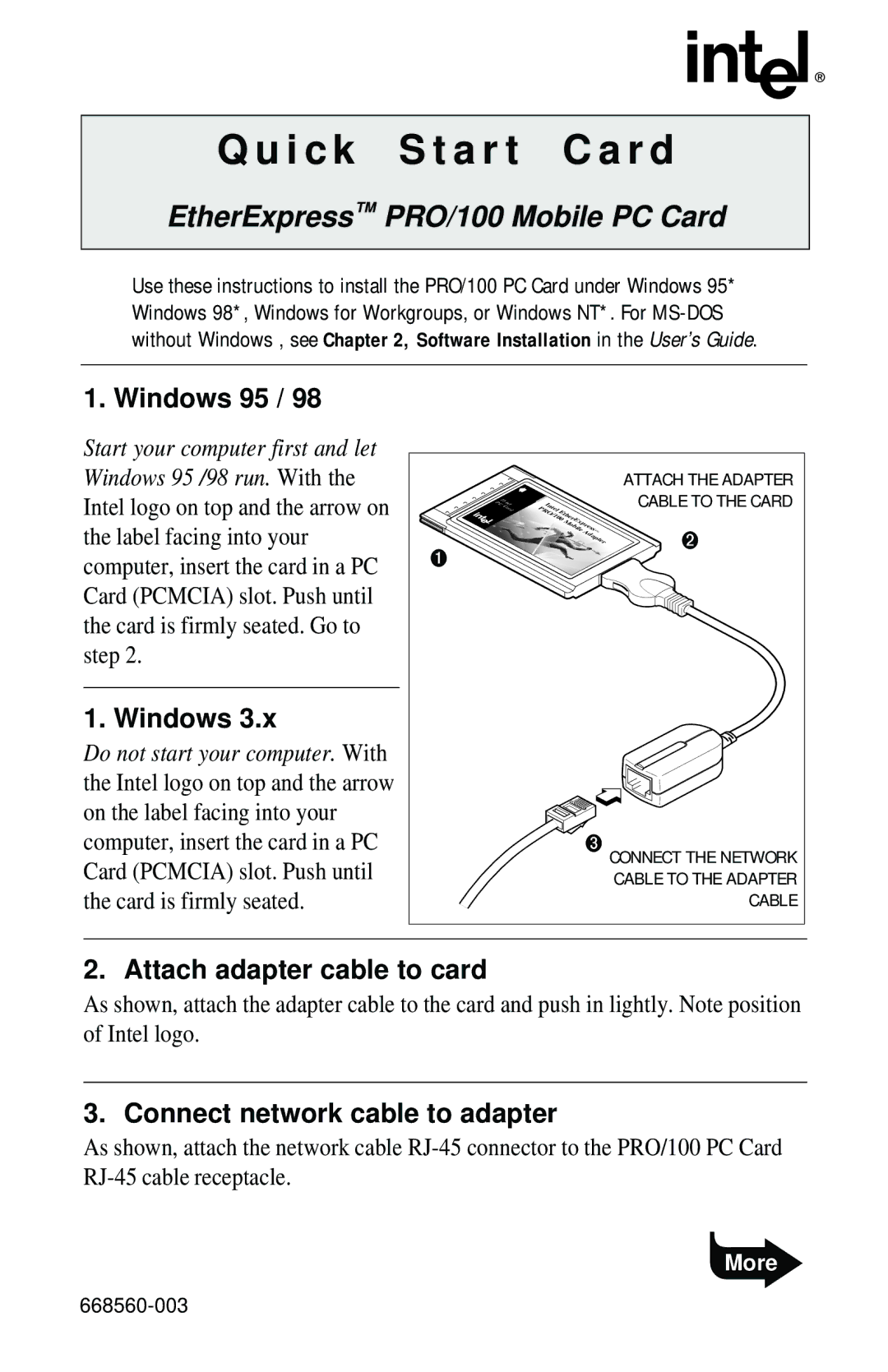PRO/100 specifications
The Intel PRO/100 network adapter series, introduced in the mid-1990s, revolutionized networking by providing robust performance and reliability for both desktop and server environments. These adapters were pivotal in enabling fast Ethernet connectivity, helping to establish standards that would be instrumental in the advancement of network technology.One of the primary features of the Intel PRO/100 series is its support for 10/100 Mbps Ethernet speeds. This dual-speed capability allowed organizations to transition seamlessly from older 10 Mbps networks to faster 100 Mbps connections without the need for a complete hardware overhaul. This adaptability made the PRO/100 cards a flexible choice for various network architectures.
Another significant characteristic of the Intel PRO/100 is its use of advanced bus mastering technology. This feature enhances data throughput by allowing the network adapter to take control of the system's bus when transmitting data. By doing so, it minimizes CPU overhead, which results in better overall system performance and efficient network communication. This was particularly beneficial in environments where network traffic was heavy, allowing the processors to handle other tasks without being bogged down.
The Intel PRO/100 series was also incorporated with Intel’s Plug and Play technology. This innovation simplified the installation process, automatically detecting the hardware and configuring it to work with existing system resources. As a result, system administrators could save time and reduce errors during setup, making it an attractive option for businesses looking to streamline their IT operations.
In terms of compatibility, the PRO/100 adapters supported a variety of network operating systems, including Windows NT, Linux, and Novell NetWare, providing users with a versatile solution for integrating into existing infrastructures. Furthermore, the cards were designed with high-quality, durable components to ensure longevity and reliability even in demanding environments.
Intel also emphasized the importance of network security and management with these adapters. The PRO/100 series featured capabilities for diagnostics and performance monitoring, allowing administrators to quickly identify and resolve network issues. Advanced features like Wake-on-LAN (WoL) provided additional functionality, enabling remote management and maintenance.
In conclusion, the Intel PRO/100 network adapter series represented a significant leap in networking technology during its time. With features such as dual-speed functionality, bus mastering, Plug and Play installation, and extensive compatibility, it laid the foundation for future innovations in network communication, solidifying Intel's reputation as a leader in networking solutions. Whether for small businesses or large enterprises, the PRO/100 series offered the reliability and performance critical to maintaining efficient and effective network operations.

